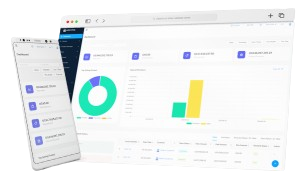Learning how to manage inventory is important for any business dealing with physical products. Whether you’re a small shop owner or running a large operation, efficient inventory control impacts everything—from meeting customer demand to maintaining healthy cash flow. Without proper management, businesses risk stock shortages, over-ordering, and wasted resources, all of which hurt profitability. By incorporating clear inventory management processes, tools, and tracking methods, you can streamline daily operations, reduce losses, and ultimately increase your bottom line while preventing unnecessary taxes.
What is Inventory Management, and Why is it Important?
Inventory management refers to the process of ordering, tracking, storing, and selling products. It plays a critical role in ensuring that businesses have the right products available at the right time while minimizing costs. Properly managed inventory prevents stockouts, overstocking, and the loss of sales. It’s not just about keeping track of items—it’s about maintaining an efficient flow of goods to support your business’s overall profitability.
By mastering the basics of how to manage inventory, businesses can improve cash flow, meet customer demand, and make smarter purchasing decisions.
The Difference Between Inventory Management and Supply Chain Management
While often confused, inventory management and supply chain management serve different purposes. Inventory management focuses on the products you have in stock—how you order, store, track, and sell them. It’s about making sure you have the right amount of goods to meet customer demand without overstocking. On the other hand, supply chain management is broader, overseeing the entire process of moving goods from suppliers to customers. It includes sourcing raw materials, manufacturing, and distribution. For small businesses, these functions may overlap, but understanding the difference helps you optimize both areas as your business grows.
Key Steps for Managing Inventory
Effectively learning how to manage inventory involves a series of steps that ensure smooth operations and prevent costly mistakes. Here’s a breakdown of the key steps:
- Define Your Sourcing and Storage
Whether you stock products in-house or use third-party fulfillment centers, establish clear sourcing and storage methods. Knowing where and how your products are stored is the first step to maintaining control. - Choose the Right Tracking System
From simple spreadsheets to advanced inventory management software, choose a system that fits your needs. This helps you track product quantities, sales, and orders accurately. - Create an Internal SKU System
Assign unique stock-keeping units (SKUs) to each product. SKUs make it easier to track and identify items quickly, improving efficiency during daily operations. - Organize Your Storage Areas
Keep products organized in clearly labeled sections. A well-organized storage area ensures easy access and helps avoid misplaced items. - Use Forecasting to Plan Orders
Analyze sales trends and use forecasting to predict future demand. This prevents over-ordering and stockouts, helping you maintain the right inventory levels. - Establish a Receiving Process
Implement clear procedures for receiving and checking new stock. Properly verifying incoming inventory helps prevent discrepancies and ensures accurate stock records. - Monitor Inventory Levels Regularly
Conduct regular cycle counts and audits to catch any discrepancies early. Regular monitoring helps you stay on top of how to manage inventory, minimize losses, and keep operations running smoothly.
By following these steps, you can streamline how you manage inventory and keep your business on track.
Best Practices for Inventory Management
Implementing best practices in how to manage inventory helps avoid costly mistakes and keeps your business running efficiently. Here are some key practices to follow:
- Use the FIFO Method
First In, First Out (FIFO) ensures that older stock is sold before newer items. This method is especially important for perishable goods or items with expiration dates, helping you reduce waste and avoid unsellable stock. - Leverage Technology
Utilize inventory management software to streamline tracking, forecasting, and order management. Tools like Arm POS or Lightspeed provide real-time updates and automate manual tasks, giving you better control over how to manage inventory. - Conduct Regular Cycle Counts
Instead of waiting for a year-end audit, perform regular cycle counts to catch inventory discrepancies early. This helps ensure accuracy and prevents issues like stockouts or over-ordering. - Optimize Your Storage Space
Keep your inventory organized with clear labeling and designated storage areas. An organized storage system speeds up order fulfillment and makes it easier to track and find items. - Set Up Reorder Points
Establish minimum stock levels for each product, and automate reorder alerts when inventory drops below that threshold. This keeps you from running out of stock and ensures you can meet customer demand without delays.
By following these best practices, you’ll improve how you manage inventory, reduce costs, and keep your business running smoothly.
Best Software for Effective Inventory Management
Choosing the right software simplifies how to manage inventory. Here are some top options, starting with Arm POS:
- Arm POS
Designed with small and medium businesses in mind, Arm POS offers a comprehensive solution that integrates inventory management with point-of-sale, HR, and accounting systems. Its real-time inventory tracking, order management, and reporting features make it easy to monitor stock levels, avoid stockouts, and ensure seamless operations. - Square POS
A free, user-friendly system that provides robust inventory tracking tools. Square POS is ideal for small businesses looking to manage stock efficiently without heavy software investment. - Lightspeed
Perfect for high-volume or multi-location businesses, Lightspeed offers advanced inventory features to help you manage stock across multiple stores. - Shopify POS
Best suited for businesses that operate both online and offline, Shopify POS seamlessly integrates inventory across all channels, ensuring accurate stock information. - monday.com
Offering customizable workflows and reorder alerts, monday.com helps businesses manage inventory efficiently while staying organized and minimizing errors.
By implementing Arm POS or one of these tools, you can streamline how you manage inventory, improve accuracy, and keep your business running smoothly.
Conclusion
Managing inventory effectively is crucial for a profitable and organized business. By following the right steps—defining your sourcing and storage needs, tracking inventory accurately, organizing your stock, and using forecasting tools—you can prevent common issues like stockouts, overstocking, and lost sales. With the help of systems like Arm POS, you can automate key processes, improve accuracy, and free up time for more important business activities. Implement these strategies, and you’ll master how to manage inventory, ensuring you always have the right products on hand to meet customer demand.






